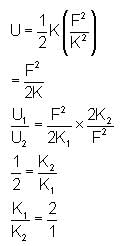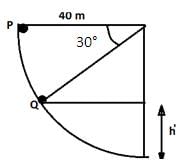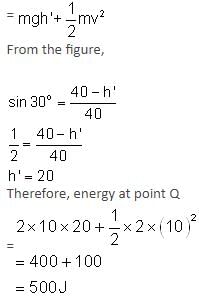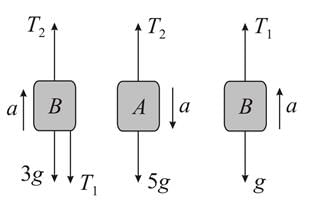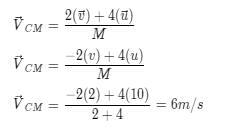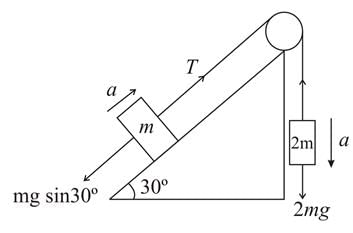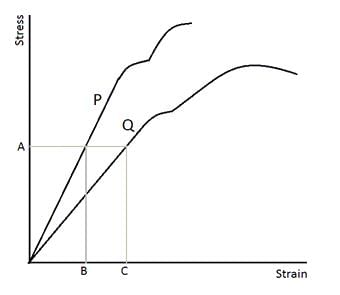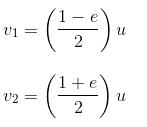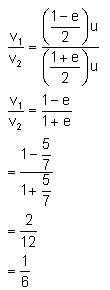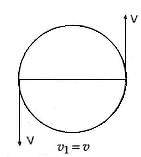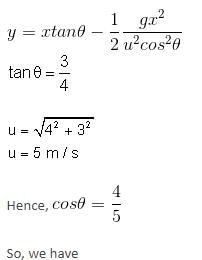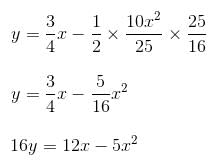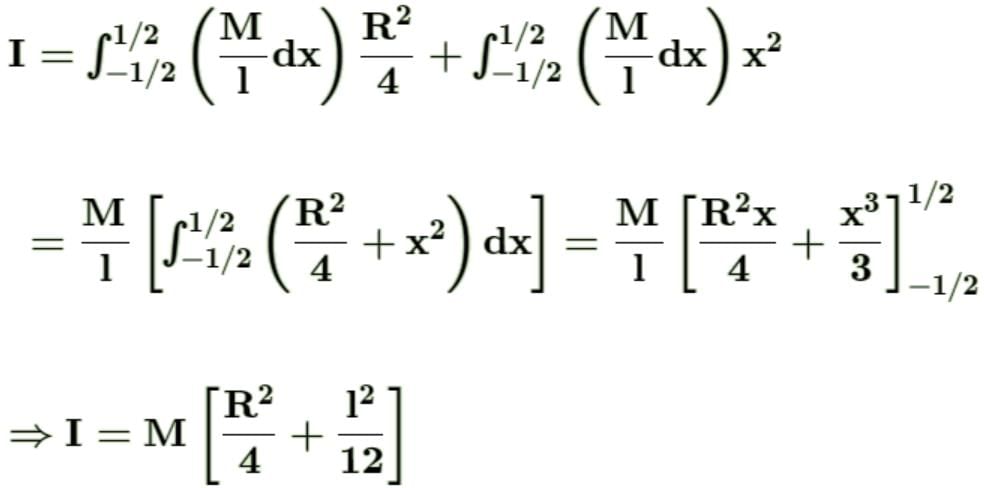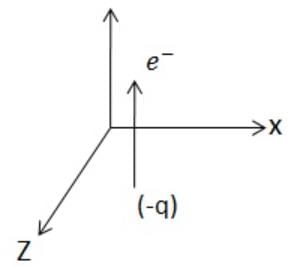SRMJEEE Physics Mock Test - 2 - JEE MCQ
30 Questions MCQ Test - SRMJEEE Physics Mock Test - 2
If a particle of mass m is moving in a horizontal circle of radius r with a centripetal force (-k/r2), the total energy is
Horizontal tube of non-uniform cross-section has radii of 0.1m and 0.05m respectively at M and N. For a streamline flow of liquid the rate of liquid flow is
The radius of curvature of a thin plano-convex lens is 10 cm (of curved surface) and the refractive index is 1.5. If the plane surface is silvered, then the focal length will be
If the equation of SHM is y = a sin (4 π t + φ) how much is its frequency?
Two springs with spring constant K1 and K2 are stretched by the same force. If the potential energy stored in the two springs respectively is U1 and U2 and the ratio U1: U2 is given to be 1 : 2, find the ratio of the spring constants K1 : K2.
In the absence of damping, the amplitude of forced oscillation at resonance is
A force of  acts on O, the origin of the coordinate system. The torque about the point (1, -1) is
acts on O, the origin of the coordinate system. The torque about the point (1, -1) is
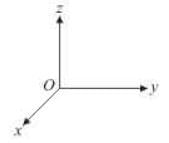
If a substance is to be paramagnetic, its atoms must have a
A particle of mass 2 kg is at the point P of a circular track as shown in the figure. It is released from the rest. At point Q, the velocity of the body is 10 m/s. If the radius of the track is 40 m, what is the work done by the body against friction between points P and Q? (Take g = 10 N/m2)
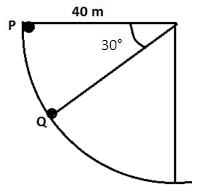
Refer to the system shown in figure. The acceleration of the masses is
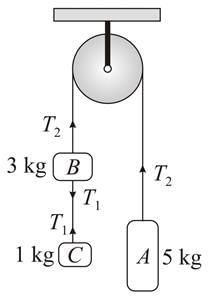
A particle of mass m moving with velocity ν collides with a stationary particle of mass 2 m and sticks to it. The speed of the system, after collision, will be
Two bodies of different masses of 2 kg and 4 kg are moving with velocities 2 m/s and 10 m/s towards each other due to mutual gravitational attraction. What is velocity of their centre of mass ?
Two blocks of masses m and 2m are connected by a light string passing over a frictionless pulley. As shown in the figure, the mass m is placed on a smooth inclined plane of inclination 30° and 2m hangs vertically. If the system is released, the blocks move with an acceleration equal to
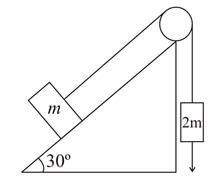
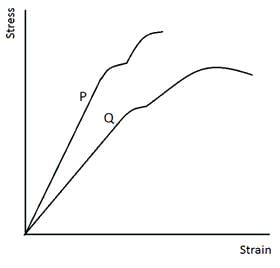
In the graph, the stress-strain curve for two different materials P and Q are plotted. Which of the following statements are correct?
I. Tensile strength of P is more than that of Q.
II. Young's modulus of P is more than that of Q.
III. Tensile strength of P is less than that of Q.
IV. Young's modulus of P is less than that of Q.
A ball of mass m, moving with a constant velocity, collides with another identical ball at rest. After the collision, the first ball acquires velocity v1 and the second ball that was at rest before collision acquires velocity v2. If the coefficient of restitution is given to be 5/7, what will be the ratio v1 : v2?
A particle is moving in a circle with uniform speed υ. In moving from a point to another diametrically opposite point
The ratio of tangential stress to the shearing strain is called
A wooden box of mass 8 kg slides down an inclined plane of inclination 30° to the horizontal with a constant acceleration of 0.4 ms−2. What is the force of friction between the box and the inclined plane? [g = 10 ms−2]
A body of mass 2 kg has an initial velocity of 3 metres per second along OE and it is subjected to a force of 4 N in a direction perpendicular to OE. The distance of the body from O after 4 seconds will be
The initial velocity of a body moving along a straight line is 7 m/s. It has a uniform acceleration of 4 m/s2. The distance covered by the body in the 5th second of its motion is
The viscous drag on a spherical body moving with a speed ν in a viscous medium is directly proportional to
A monoatomic gas is suddenly compressed to 1/8 of its volume adiabatically. The ratio of pressure of the gas now to that of its original pressure is
(Given, the ratio of the specific heats of the given gas to be 5/3)
A projectile is projected with an initial velocity of  The equation of the trajectory followed by the projectile will be
The equation of the trajectory followed by the projectile will be
A solid disc of mass M is just held in air horizontally by throwing 40 stones per sec vertically upwards to strike the disc each with a velocity of 6 ms⁻1. If the mass of each stone os 0.05 kg what is the mass of the disc. (g = 10 ms⁻2)
A bulb rated at (100W-200V) is used on a 100V line. The current in the bulb is
Wave optics is based on wave theory of light put forward by Huygen and modified later by
The moment of inertia of a cylinder of radius R, length l and mass M about an axis passing through its centre of mass and normal to its length, is
A simple pendulum executing simple harmonic motion is falling freely along with the support. Then
The monoenergetic beams of electrons moving along + y direction enters a region of uniform electric and magnetic fields. If the beam goes straight through, then these simultaneously fields B̅ and E̅ are directed respectively




